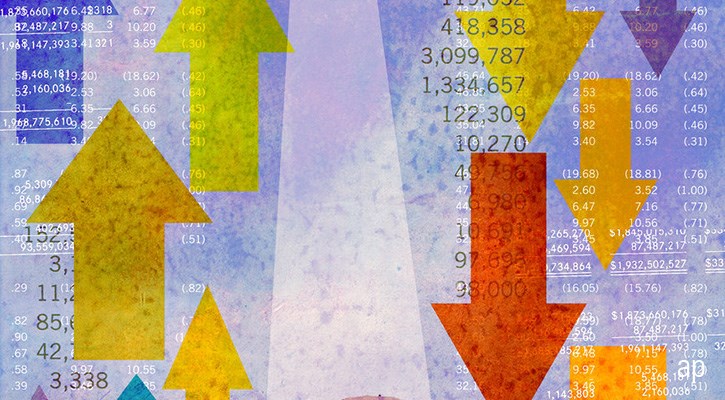
A Missed Opportunity
Recently published in The Review of Asset Pricing Studies is a study of how equity funds fared this spring, when global stock markets were buffeted by news of COVID-19. Entitled "Mutual Fund Performance and Flows During the COVID-19 Crisis," by Lubos Pastor and M. Blair Vorsatz, the paper addresses the relative returns for active stock funds from late February through the end of April. (The article also examines funds' sales results, a topic that I will set aside.)
The authors posited that although active stock funds regularly trail passive funds, they may justify their existence by excelling during "periods that are particularly important to investors"--that is, during market gyrations that presage economic recessions. To capture both sides of 2020's investment crisis, they selected a time period that included both the stock market decline and its immediate recovery.
Regrettably, active stock-fund managers failed the hypothesis by lagging the passive alternatives. This held true whether the authors used the S&P 500 for their comparisons, a FTSE/Russell index, a fund's prospectus benchmark, or customized factor models. Whichever approach they selected, the average active fund trailed through both the downturn and the full crisis period. (The active funds did outgain some of the factor models during April's rebound.)
This first lesson, that active funds should not be expected to outperform their passive rivals when the markets become volatile, comes as no surprise. The authors cite several studies showing that active equity funds have thrived, relatively speaking, during past recessions. However, those articles are dominated by pre-2005 results. Nothing during the past 15 years has suggested that active stock-fund managers, as a group, will get going when the going gets tough.
The exception can occur when one segment of the stock market is regarded as being highly speculative, thus deterring active managers. Should that segment plummet in value while other investments hold firm, active managers will once again shine. Such was the case in the early 1990s with Japanese companies, and a decade later with U.S. Internet stocks. In both instances, active funds dodged the worst of the downturn.
However, no such condition exists today. Some claim that technology stocks have become frothy, thereby constituting a "bubble." Perhaps so, but for the fate of active managers that argument is beside the point, because if technology stocks crumble, so will their funds. On average, U.S. large-blend stock funds have invested 23% of their equities in technology firms, as opposed to 25% for the S&P 500. For large-growth funds, the actively managed average is 32%. Should the technology sector crash, active U.S. stock funds will collapse along with it.
Sustainability Mattered
The authors' second discovery could not so easily have been predicted. The higher a fund's Morningstar Sustainability Rating, assigned by how closely its portfolio holdings meet environmental, social, and governance standards, the better that fund tended to perform during the COVID-19 crisis. On average, 5-globe funds beat 4-globe funds, 4-globe funds outdid 3-globe funds, and so forth.
The probable explanation: Sustainability Ratings are related to several indicators of company quality. Companies from funds that carry the top Sustainability Rating have an average return on invested capital of 15%, as opposed to 7% for firms held by funds that have the lowest Sustainability Rating. Similarly, 28% of holdings from funds with 5-globe Sustainability Ratings have wide business moats, as assessed by Morningstar. For 1-globe funds, that figure is but 17%.
These differences are reflected in the stocks' prices. The portfolios of 5-globe funds possess average price/earnings ratios of 27 and price/book ratios of 4.4, while those of 1-globe funds average 19 and 2.6, respectively. When investors sought relative quality during the onset of the COVID-19 panic, funds with higher Sustainability Ratings were better positioned.
(The authors attempted to control for such effects, so that in theory their calculations measure solely the contributions of portfolio managers, rather than ongoing differences between the various pools of funds. In practice, however, there are far more factors--for example, the aforementioned Morningstar Economic Moat Ratings--than can be properly tested, particularly as the factors are interrelated.)
The Stars Aligned
The third revelation is the puzzler: Morningstar Ratings for funds were predictive. The star ratings tend to be loosely correlated with future outcomes, but they rarely behave so reliably. The authors found that during the coronavirus crisis, a single extra star implied a higher annualized return of almost 6%. "Therefore," they write, "a 5-star fund outperform[ed] a 1-star fund of the same style by 4 times that amount, 23.1%, on average." That is a very large amount.
I have no idea why that occurred. Unlike with the Sustainability Ratings, the star ratings are only weakly associated with company attributes. That is, the characteristics of the companies owned by 5-star funds, as measured by price/earnings ratios, profitability, and wide-moat exposure, resemble those of 1-star funds. Nor when entering the crisis were the standard deviations of top-rated funds notably lower than those of the bottom-rated funds.
The authors write, "This is a surprising result. It is not clear a priori why Morningstar star ratings, which are computed before the crisis from historical risk-adjusted returns, should have such strong predictive power for fund performance during the crisis." I fully agree with their assessment. When the next recession approaches, the star rating is unlikely to prove so informative.
However, all things being equal, I would expect the first two findings to persist. During most bear markets that arise from recessionary fears, actively managed funds will struggle to best their benchmarks, while funds with high Sustainability Ratings will benefit from the higher quality of their portfolio holdings.
Are You Getting The Right Returns?
Get our free equity indexes to benchmark your portfolio here








.jpg)











